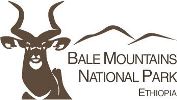History Of Protected Areas In Ethiopia
The conservation of Ethiopia’s unique biodiversity and the essential ecosystems in which they live has had a varied history in Ethiopia. The first recorded indigenous resource conservation-oriented activities (mostly tree planting) took place during the reign of Emperor Zerea Yacob 1434-1468 (Pankhrust, 1989). In the process, Menagasha forest was created, which represents the oldest conservation area on the continent and still stands today. The first attempt to protect the wildlife of Ethiopia was made by Emperor Menelik II, in 1901 (Wolde-Meskel, 1950). In 1909, the first legislation was passed to regulate hunting of wildlife to ensure that certain species (particularly elephants) were not over-harvested (Negarit Gazetta, 1944). International interest in the conservation of Ethiopian wildlife first began in the 1960s, when a team from the former New York Zoological Society (NYZS) made a visit to Ethiopia and recommended the establishment of protected areas to preserve the large mammalian wildlife of the country. The most important landmark in the conservation of Ethiopian wildlife came after a UNESCO Mission visit in 1963 under request from the Ethiopian government and recommended the establishment a small network of national parks. The Ethiopian Wildlife Conservation Organisation (EWCO) was established in 1965 as a semi-autonomous body responsible for wildlife conservation; however its initial legal powers stemmed from the 1944 “Preservation of Game Proclamation” – this authority was strengthened over the next few years.
In 1974 the Provisional Military Government of Socialist Ethiopia, in the statement of its Economic Policy, declared “It should, however, be emphasised that the conservation of wildlife, birdlife etc., particularly of the rare species… will be viewed primarily as national objectives in their own right and not only as a matter of attracting foreign visitors. This task of preservation will be actively pursued by the state”. Following this the State Forest Agency was integrated with the Wildlife Conservation Organisation to form the Forestry and Wildlife Development Department, which had the word Conservation added to it after a 1980 proclamation.
Later, the Ethiopian Wildlife Conservation Department took over the responsibility of wildlife conservation, as well as the management of Ethiopia’s Protected Areas, which at the time consisted of 9 national parks, 12 wildlife reserves, 2 wildlife sanctuaries and 14 controlled hunting areas.
Currently, there are 11 national parks (but only two are gazette: Awash NP and Simien NP), 4 wildlife sanctuaries, 8 wildlife reserves and 18 controlled hunting areas in Ethiopia. Together these represent 14% of the country, which is above the global average. National parks and sanctuaries represent 3.2% of the country.
